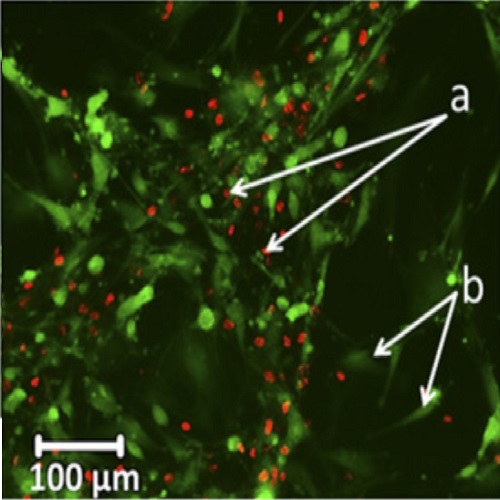Transplantation of bovine adrenocortical cells encapsulated in alginate.
Current treatment options for adrenal insufficiency are limited to corticosteroid replacement therapies. However, hormone therapy does not replicate circadian rhythms and has unpleasant side effects especially due to the failure to restore normal function of the hypothalamic-pituitary-adrenal (HPA) axis. Adrenal cell transplantation and the restoration of HPA axis function would be a feasible and useful therapeutic strategy for patients with adrenal insufficiency. We created a bioartificial adrenal with 3D cell culture conditions by encapsulation of bovine adrenocortical cells (BACs) in alginate (enBACs). We found that, compared with BACs in monolayer culture, encapsulation in alginate significantly increased the life span of BACs. Encapsulation also improved significantly both the capacity of adrenal cells for stable, long-term basal hormone release as well as the response to pituitary adrenocorticotropic hormone (ACTH) and hypothalamic luteinizing hormone-releasing hormone (LHRH) agonist, [D-Trp6]LHRH. The enBACs were transplanted into adrenalectomized, immunodeficient, and immunocompetent rats. Animals received enBACs intraperitoneally, under the kidney capsule (free cells or cells encapsulated in alginate slabs) or s.c. enclosed in oxygenating and immunoisolating ?Air devices. Graft function was confirmed by the presence of cortisol in the plasma of rats. Both types of grafted encapsulated cells, explanted after 21-25 d, preserved their morphology and functional response to ACTH stimulation. In conclusion, transplantation of a bioartificial adrenal with xenogeneic cells may be a treatment option for patients with adrenocortical insufficiency and other stress-related disorders. Furthermore, this model provides a microenvironment that ensures 3D cell-cell interactions as a unique tool to investigate new insights into cell biology, differentiation, tissue organization, and homeostasis.

- Proc. Natl. Acad. Sci. U.S.A. 2015 Feb 24;112(8):2527-32
- 2015
- Medical Biology
- 25675525
- PubMed
Enabled by:
